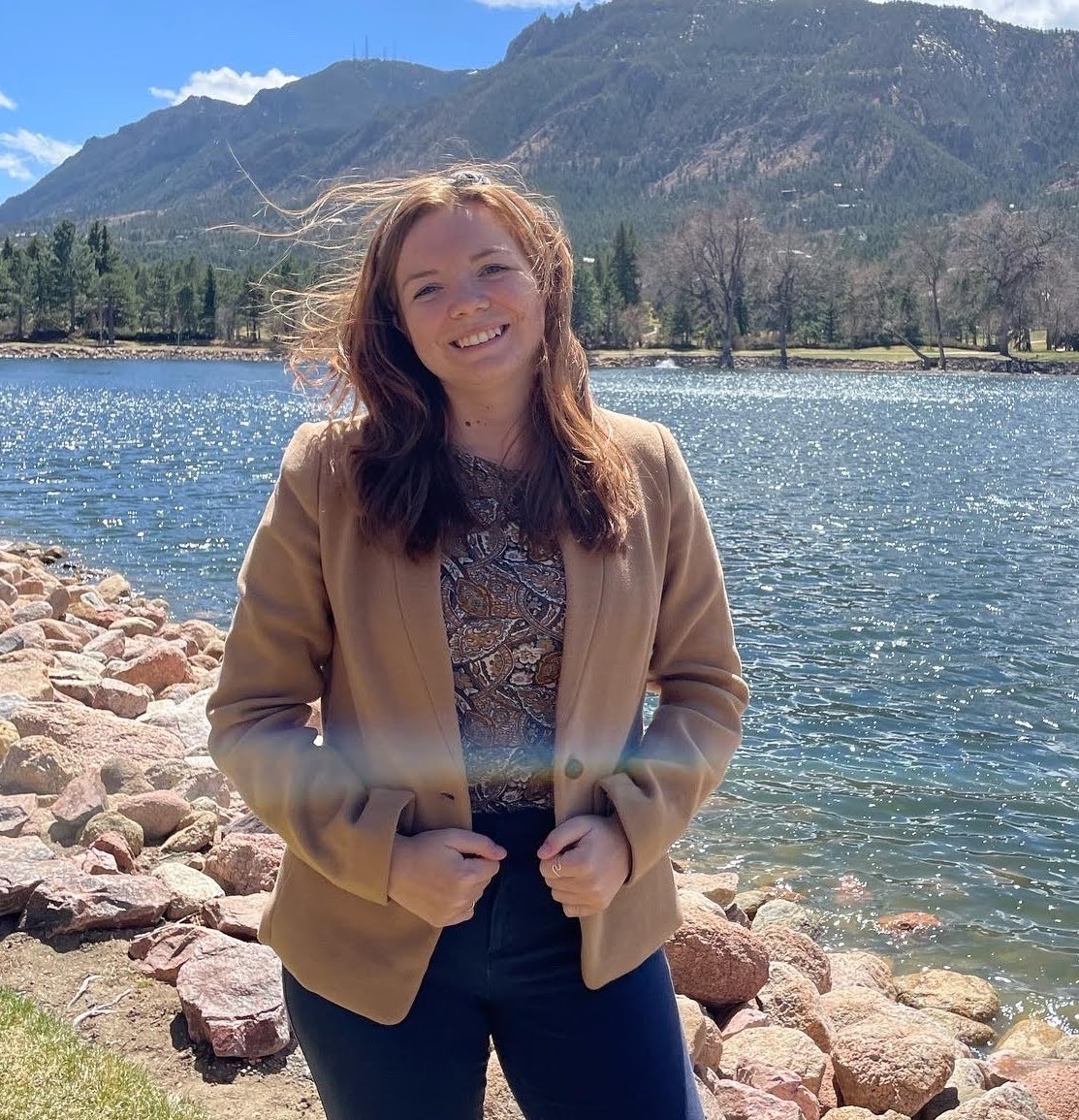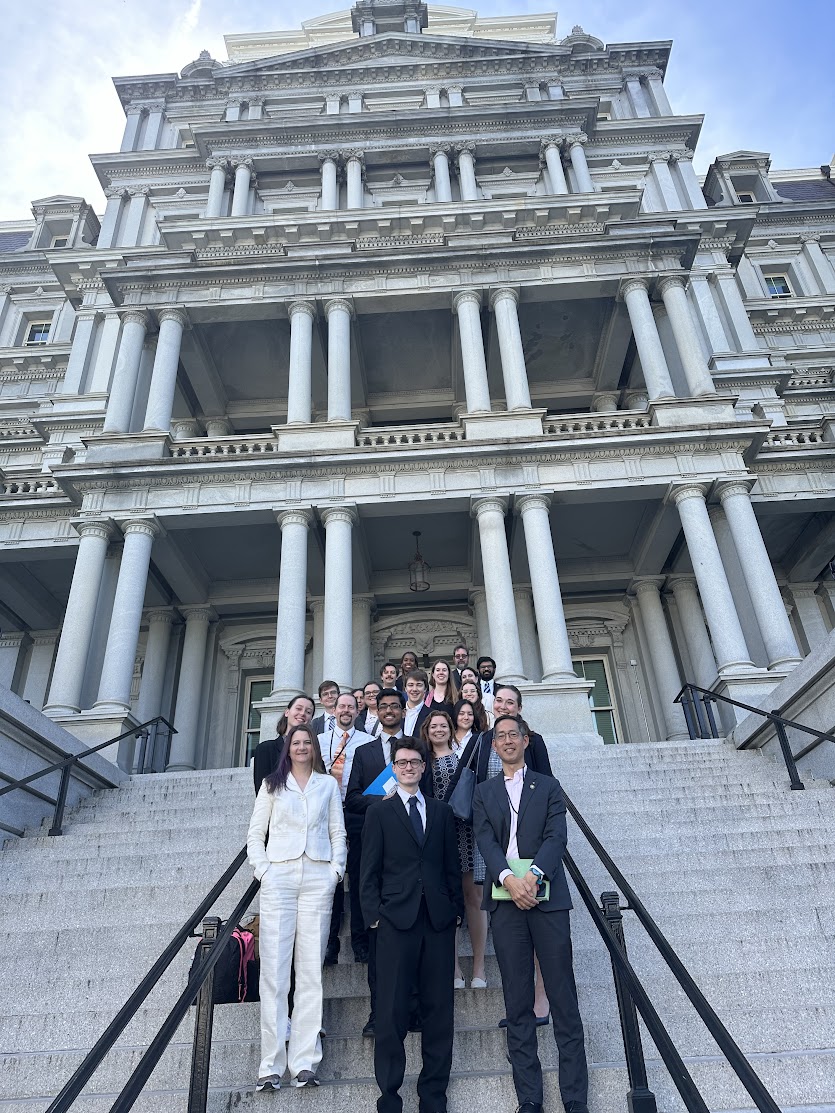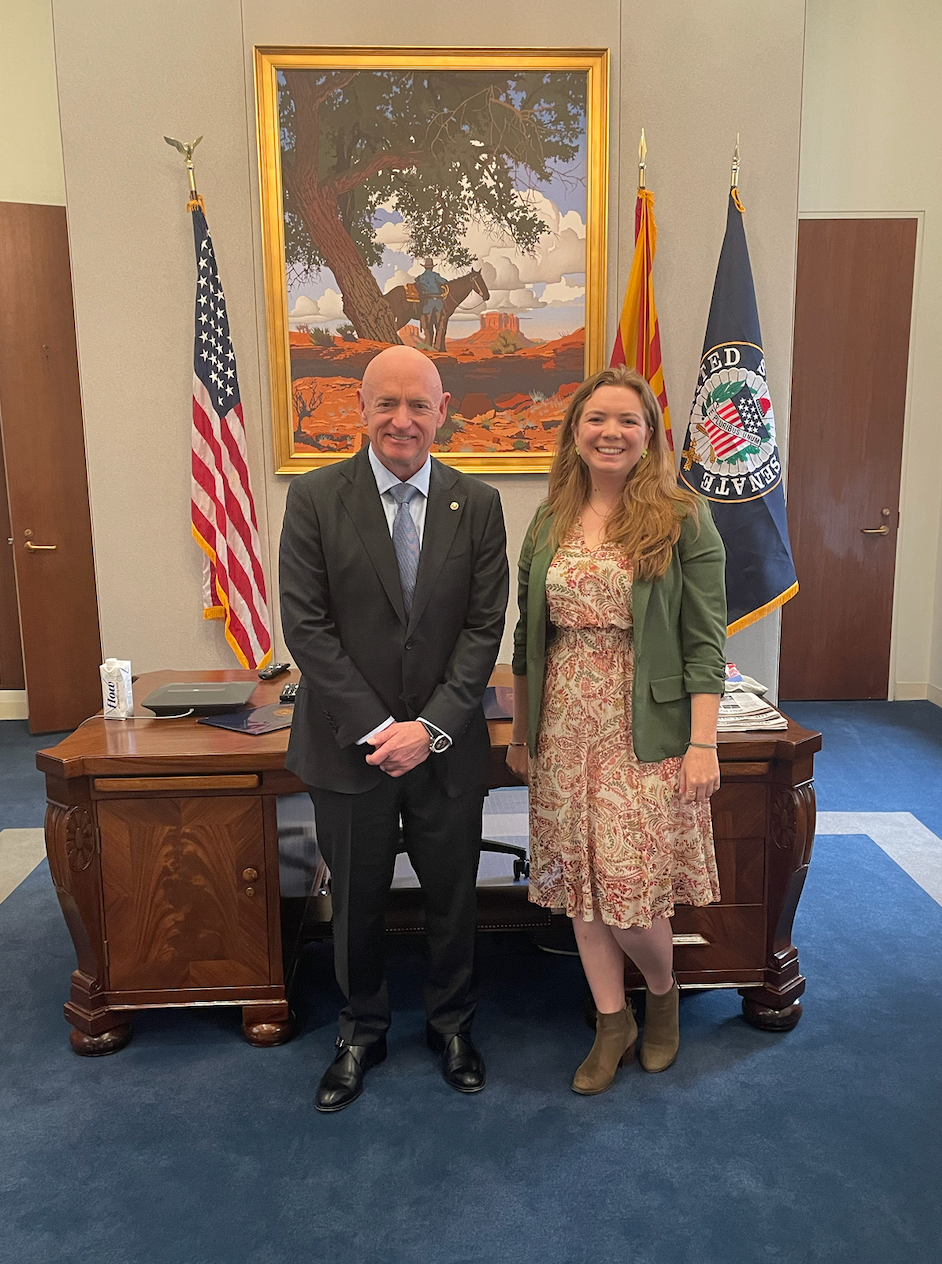Science Takes a Village
Lindsey Wiser Arizona State University
Each year, the AAS brings volunteers to Washington, DC, to learn how to advocate for science as part of our Congressional Visits Day (CVD). These volunteers take part in a 1.5-day workshop to learn about the current policy issues important to the astronomical sciences before spending a day on Capitol Hill meeting with their Congress members. In this guest post, CVD volunteer Lindsey Wiser describes her experience at this year's CVD.

My biggest takeaway from the 2024 AAS Congressional Visits Day (CVD) was that science takes a village. While I had some prior experience with science policy and advocacy, CVD reinforced how much work is done “behind the scenes” to support the science I love and reminded me of my passion for contributing to that process.
As far as space nerds go, I had a pretty classic introduction to space. I binged Star Trek, and 12-year-old Lindsey was devastated that she couldn’t live in that universe and explore “strange new worlds” on the Enterprise. From there, a life of space exploration was pretty natural, but it turns out there is a lot more to the world of space exploration than I knew back then (and certainly more than I know about even now). I started off studying mechanical engineering, hoping it would lead to a job at NASA building science missions. Eventually, I migrated towards astronomy, instead wanting to work with the data collected by those missions. During my undergraduate years living in Maryland and DC, and with the support of the outstanding Brooke Owens Fellowship community, I also developed an interest in space policy. One summer, I regularly met with a friend at the Library of Congress to work through the Planetary Society’s online Space Policy 101 course and discuss our thoughts. During undergrad, I got my first look at how many disciplines are essential to the space exploration process — scientists, engineers, policymakers, teachers, artists, and more.
I’m now in my fourth year of my astrophysics PhD studying exoplanet atmospheres. I’m working with current and future NASA missions and I continue to engage with space policy through the Space Generation Advisory Council. When I saw the call for participation in CVD, it was a very easy sell. I submitted my brief application immediately, and I was over the Moon to fly back to DC for a week of learning and advocacy with other scientists.
The 2024 AAS Congressional Visits Day took place over three days:
Day 1: The first day started with lunch with the other volunteers. From the beginning, it was energizing to meet scientists from around the country (and catch up with some existing friends!) who are primarily early in their careers and excited to advocate for space science. After lunch, we listened to three talks on “Federal Agency Perspectives.” First, we heard from Dr. Bryan Field in the Department of Energy’s (DoE) Office of Science. Second was Dr. Mark Clampin from NASA, followed by Dr. Chris Smith from the National Science Foundation (NSF). Each agency leader provided a fantastic overview of their projects and priorities, as well as the documents guiding those priorities (check out the Decadal Surveys and the P5 Report). As someone who works primarily with space-based NASA facilities, I was especially interested to learn more about Rubin Observatory, CMB-S4 (a next-generation cosmology experiment), and other ground-based facilities from the DoE and the NSF. Overall, Day 1 set the tone: A lot of work goes into getting science done! Science relies on a broad-reaching system, from setting priorities to finding money, building facilities, and research and development.
Day 2: Day two started with breakfast and a talk from Dr. Kevin Marvel, the Chief Executive Officer of the AAS, on “Communicating Science.” This talk focused on communicating science to policy makers in a landscape where science funding remains relatively flat or decreasing. We discussed the federal budget cycle and our strategic reasoning for visiting congressional offices in April when those offices are considering the president’s proposed budget and developing their own. Second, we heard from Dr. Josh Reding, a Science & Technology Policy Fellow for the American Association for the Advancement of Science serving at the NSF’s Office of Spectrum Management. He talked about the huge increase in satellites in recent years, challenges with optical and radio interference in astronomy, and the necessity for international coordination efforts to ensure the long-term sustainability of space activities, including astronomy.
Next, Dr. Yaswant Devarakonda (AAS John Bahcall Public Policy Fellow and our fearless leader for CVD!) presented the message the AAS aims to communicate to Congress: We request $9B for NASA’s Science Mission Directorate, $11.9B for NSF, and general continued support for NASA, the NSF, and the DoE to fund priorities in the Decadal Surveys. AAS is invested in a wide range of topics, such as the impacts of satellite constellations, space-traffic management, environmental impacts of space activities, workforce development, and more. So, our goal as CVD volunteers was to meet with our state’s congressional offices and communicate AAS’s core funding requests while emphasizing topics that are important to us and our states.
As a PhD candidate in Arizona, I decided to focus on financial support for students and the numerous space missions that Arizona universities contribute to. I talked about my experience working with data from the Hubble Space Telescope and JWST, and my student shadow role supporting NASA’s Pandora SmallSat. In my meetings with congressional staff, I also ended up discussing Arizona observatories, companies in Arizona contributing to space projects, the use of satellites for climate monitoring, space traffic management, optical and radio interference in astronomy, funding for the Giant Magellan Telescope and the Thirty Meter Telescope, and the CHIPS and Science Act, which authorizes federal funding increases for science. After lunch, we were lucky to hear from a panel of people with experience working on the Hill. This impressive panel was helpful as we prepared for our meetings, and the speakers provided further examples of career paths in science policy.
Day two was packed! We weren’t done yet! Next, we visited the White House, specifically the Eisenhower Executive Office Building. We met with people who work on science policy and budgets for the president and got an insightful look at how support for science in the executive branch works. Finally, we finished off the day with dinner and far too much food. I can’t complain!

Day 3: Time for Congress visits! Day three was reserved for meetings with congressional offices that we had scheduled in the weeks leading up to CVD. To start my day, I was lucky enough to be invited to a “constituent coffee hour” to meet my Senator, Mark Kelly, who also happens to be an astronaut — his office hosts both a space suit and a green inflatable alien. During my short chat with Senator Kelly, we discussed some of the new exoplanet science JWST is enabling. (Pro tip: if you are visiting DC, many offices host meet-and-greets for constituents. Typically, you can send an email to ask.)

I had four additional 30-minute meetings that day with staff in each office we visited and at least one other AAS volunteer. For Arizona, we met with staff from Senator Sinema’s office, Senator Kelly’s office, and Representative Stanton’s office. For my fourth meeting, I played backup in Oregon Senator Wyden’s office while the AAS volunteer from Oregon took the lead (and did amazingly!). In every meeting, the staff were engaged, asking questions, and generally supportive of science. They were transparent about the challenges they faced in increasing science funding but encouraged us to continue our visits to spread awareness of the topics we were discussing.
By the end of CVD, I was physically exhausted but SO emotionally energized. CVD broadened my perspective of the policy that enables the science we all love, and I am very grateful for the opportunity to participate. I have begun to make plans for when I complete my PhD to continue contributing to the policy world. As busy scientists, we may not always have the time to engage with policy and advocacy. Still, for those interested, I encourage you to try the AAS CVD and other AAS opportunities!

